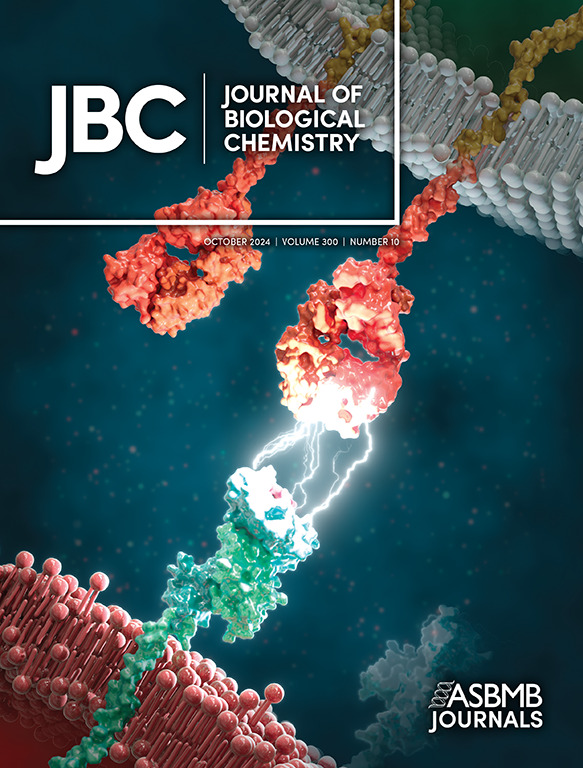The Escherichia coli RelB antitoxin C-terminus is essential for RelE toxin suppression and transcriptional repression.
IF 4
2区 生物学
Q2 BIOCHEMISTRY & MOLECULAR BIOLOGY
引用次数: 0
Abstract
Bacterial type II toxin-antitoxin (TA) systems exhibit high specificity within each pair to ensure precise recognition of the toxin by its cognate antitoxin to inhibit toxicity of the free toxin. Despite high structural similarity among some TAs, crosstalk between non-cognate TA pairs is rare. To determine how the E. coli RelB antitoxin suppresses its cognate RelE toxin, we engineered C-terminal truncations of RelB and tested their functional effects on toxin suppression in E. coli. We find that removal of the long C-terminal α3 and connecting loop 4 (L4) of RelB prevents RelE suppression. Quantitative binding assays of RelE and RelB variants support a reduced affinity upon removal of the RelB C-terminus. Disrupting these interactions between RelB and RelE also led to a significant decrease in transcriptional repression at the relO operator, underscoring the requirement for RelE binding to RelB for optimal repression at DNA repressor elements. Comparison to other structurally homologous TA systems, such as E. coli DinJ-YafQ, reveals key differences in the molecular mechanisms of both toxin suppression and DNA repressor activity highlighting the diversity in TA regulation and function.大肠杆菌RelB抗毒素c端对RelB毒素抑制和转录抑制至关重要。
细菌II型毒素-抗毒素(TA)系统在每对中表现出高特异性,以确保其同源抗毒素对毒素的精确识别,从而抑制游离毒素的毒性。尽管某些TA具有高度的结构相似性,但非同源TA对之间的串扰是罕见的。为了确定大肠杆菌RelB抗毒素是如何抑制其同源RelE毒素的,我们设计了RelB的c端截断,并测试了它们在大肠杆菌中对毒素抑制的功能作用。我们发现去除RelB的长c端α3和连接环4 (L4)可以阻止RelB的抑制。RelE和RelB变体的定量结合分析支持RelB c端去除后亲和力降低。破坏RelB和RelE之间的这些相互作用也会导致relO操作符的转录抑制显著减少,这强调了RelE与RelB结合才能实现对DNA抑制元件的最佳抑制。与其他结构同源的TA系统(如大肠杆菌DinJ-YafQ)相比,揭示了毒素抑制和DNA抑制活性的分子机制的关键差异,突出了TA调节和功能的多样性。
本文章由计算机程序翻译,如有差异,请以英文原文为准。
求助全文
约1分钟内获得全文
求助全文
来源期刊

Journal of Biological Chemistry
Biochemistry, Genetics and Molecular Biology-Biochemistry
自引率
4.20%
发文量
1233
期刊介绍:
The Journal of Biological Chemistry welcomes high-quality science that seeks to elucidate the molecular and cellular basis of biological processes. Papers published in JBC can therefore fall under the umbrellas of not only biological chemistry, chemical biology, or biochemistry, but also allied disciplines such as biophysics, systems biology, RNA biology, immunology, microbiology, neurobiology, epigenetics, computational biology, ’omics, and many more. The outcome of our focus on papers that contribute novel and important mechanistic insights, rather than on a particular topic area, is that JBC is truly a melting pot for scientists across disciplines. In addition, JBC welcomes papers that describe methods that will help scientists push their biochemical inquiries forward and resources that will be of use to the research community.
 求助内容:
求助内容: 应助结果提醒方式:
应助结果提醒方式:


